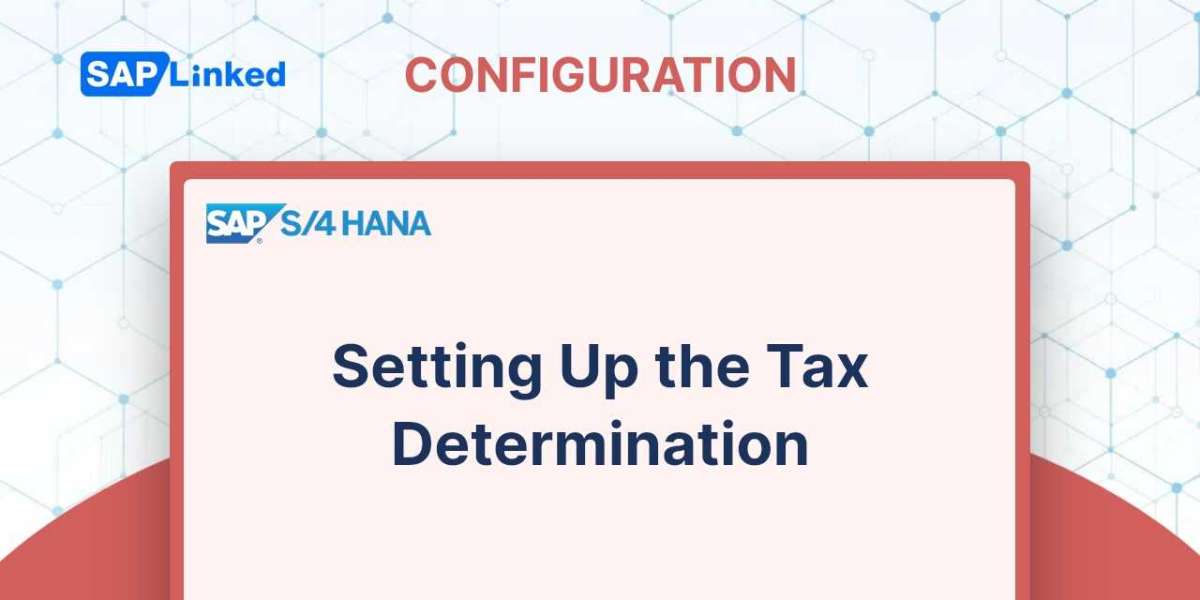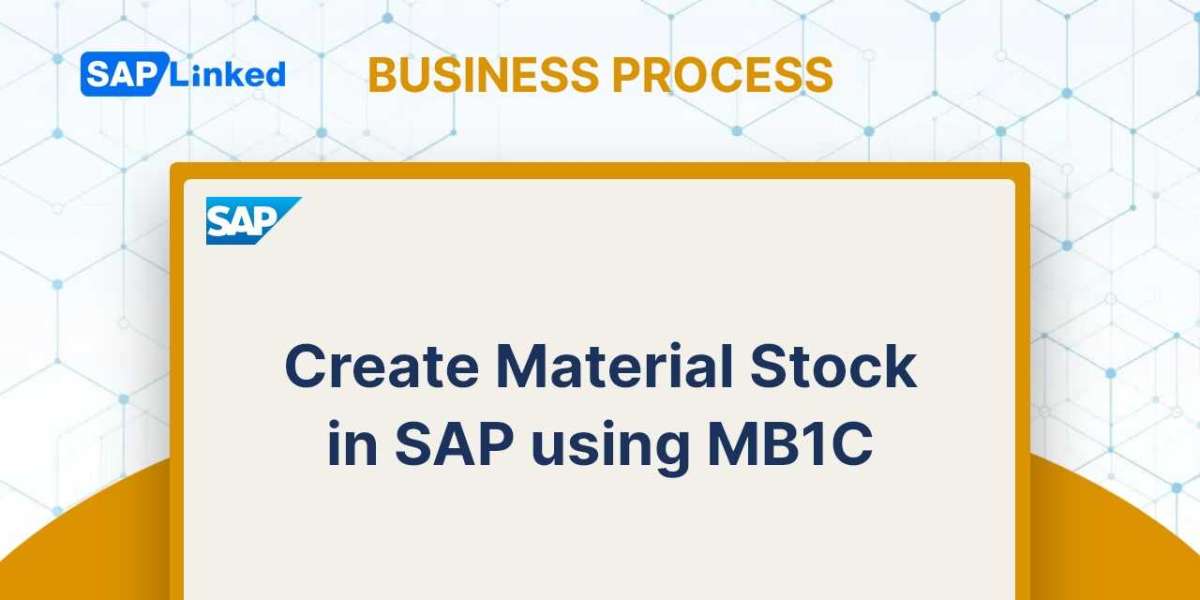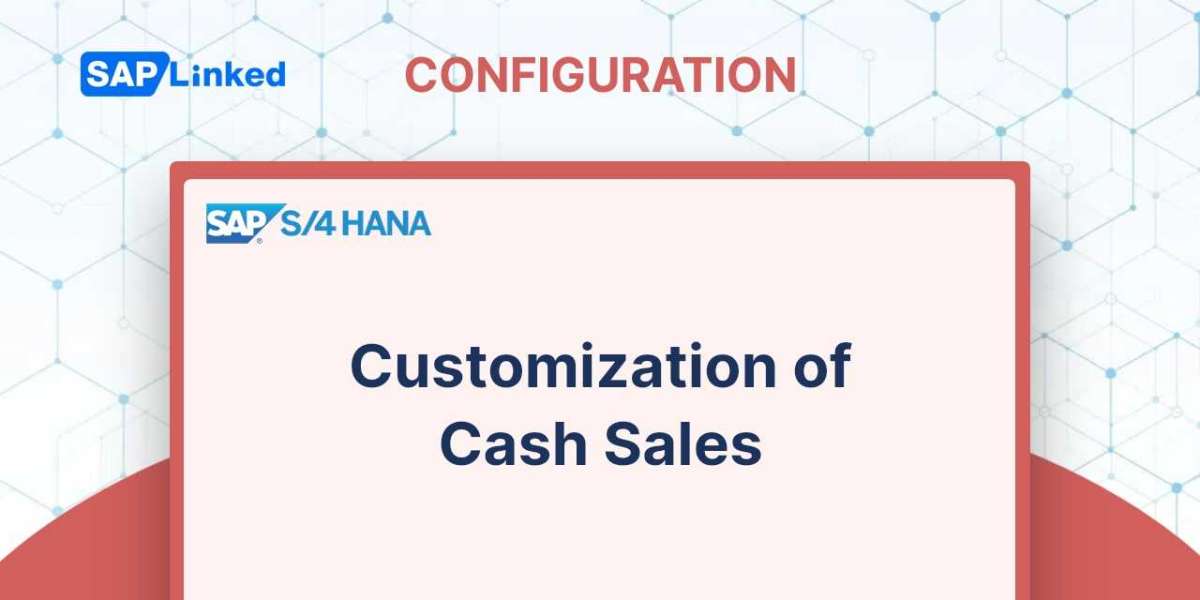The applicable taxes must be taken into account in any sales transaction. The location of the delivery plant, the client's nation and region, and the material and client tax categories are the main factors of taxes. Worldwide, there are many different tax laws and systems. As a result, it is crucial to collect and record the needs when creating your business strategy with your finance staff.
Pricing and taxation both use the conditional approach. Like any other condition, a tax condition occurs in the pricing procedure as a condition type and an account key. The connection between SD and FI for tax posting to a tax GL account is further maintained by this account key. You assign the tax classifications to the customer and material master records after customizing is complete. The condition tables are where you set up the tax rates.
SAP reads the following information when an user creates a sales document:
- Che customer master's eligibility for customer taxes
- Departure region and location from the plant utilized in the sales document
- Material tax relevance from the material master
- Country of destination and location according to the ship-to party record
The applicable tax rate and tax code are then extracted from the master records by SAP, which is subsequently applied to the sales document.
SAP determines the appropriate tax depending on settings after reading the pricing details from the sales document and the service rendered date (Post Goods Issue date) from the delivery document during the billing creation process.
The tax code and the account key specify the GL account to which the tax posting can be made when the accounting for this billing document is posted. The steps for configuring tax in SAP are as follows:
Step 1: Define Tax Determination Rules
The menu path is:
IMG ➢ Sales And Distribution ➢ Basic Functions ➢ Taxes ➢ Define Tax Determination Rules (transaction OVK1)
You can designate a tax category by country in this setting. Only the settings for the countries that are pertinent to your business situation should be kept. The pricing condition type for taxes in your pricing method will fall under this category. The only condition types that can be used here are those that are tax-related (in the condition class). In some countries, there may be more than one tax classification. You can use the sequence field in this situation.
Verify that the country is included in the list. To do this, click New Entries and input the access sequence number, tax category, and country code (Figure 1).

Figure 1 Assigning the tax category to a country
Step 2: Define Regional Codes
There are local taxes in some countries. Consequently, it is vital to define each counties or cities inside a country. Use this menu:
IMG ➢ Sales And Distribution ➢ Basic Functions ➢ Taxes ➢ Define Regional Codes ➢ Define County Codes
Enter the Country and Region details, then, if necessary, separate them into county codes.(Figure 2).
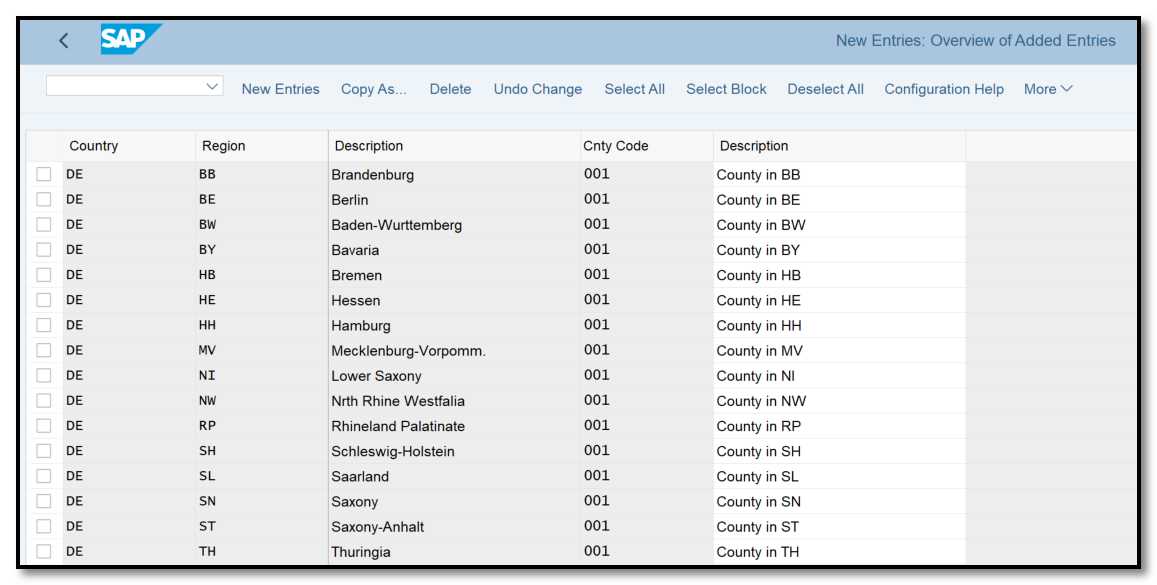
Figure 2 Defining regions
You can specify the Country and Region and then divide them into city codes, if you need to set up taxes at the city level. The way to achieve this is:
IMG ➢ Sales And Distribution ➢ Basic Functions ➢ Taxes ➢ Define Regional Codes ➢ Define City Codes
Step 3: Assign Delivering Plants for Tax Determination
Setting up the address information is important since the delivery plant chooses the source address.
Use the menu path:
IMG ➢ Sales And Distribution ➢ Basic Functions ➢ Taxes ➢ Assign Delivering Plants For Tax Determination (OX10)
Double-click the plant of your choice. Include any necessary information about the address, such as the country, region, county, city, and jurisdiction code (for US plants).
Step 4: Master Data Classification
The system needs to be configured with customers and materials so that it can decide which tax to apply to a transaction. It is possible to control the tax by grouping your materials and customers.
Use the menu path:
IMG ➢ Sales And Distribution ➢ Basic Functions ➢ Taxes ➢ Define Tax Relevancy Of Master Records ➢ Customer Taxes (OVK3)
For material taxes, use:
IMG ➢ Sales And Distribution ➢ Basic Functions ➢ Taxes ➢ Define Tax Relevancy Of Master Records ➢ Material Taxes (OVK4)
In either scenario, describe the tax classification codes and the tax condition type (tax category) (Figures 3 and 4). For instance, the materials used in your product line may be tax-free, partially taxed, or fully taxed. Three material tax-classification codes would be created in this scenario, and they would be kept up to date in the material master.


Figure 4 Defining the material tax classification codes
The tax categorization is entered when you maintain the customer master data on the Billing Document tab under the Sales Area Data section. As depicted in Figure 5, we entered tax categorization 1 for customer 9900000062. (taxable). Keep in mind that the tax determination rule maintained for the country controls the tax category (MWST) that displays on this screen (Germany).
On the Sales: Sales Org 1 tab of the material master (using MM01 or MM02), you enter the tax categorization. Figure 6 illustrates how we categorized the material 3127 as full tax.
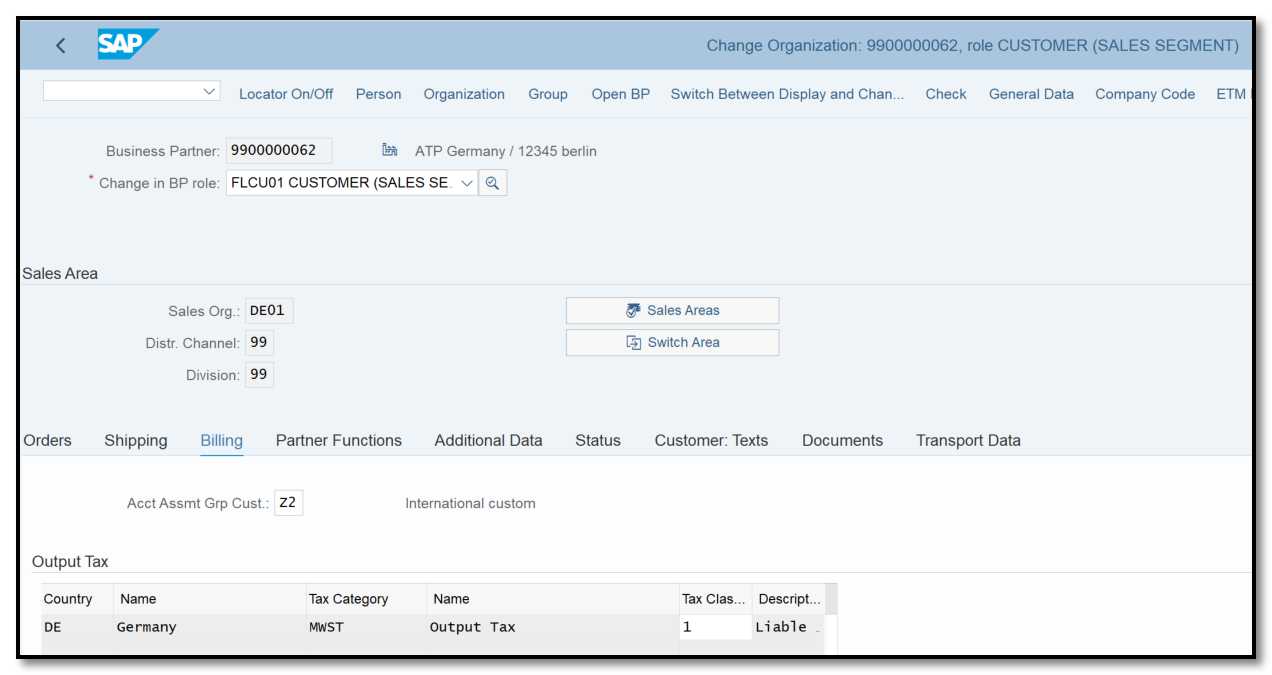
Figure 5 Maintaining the customer tax classification in the customer master
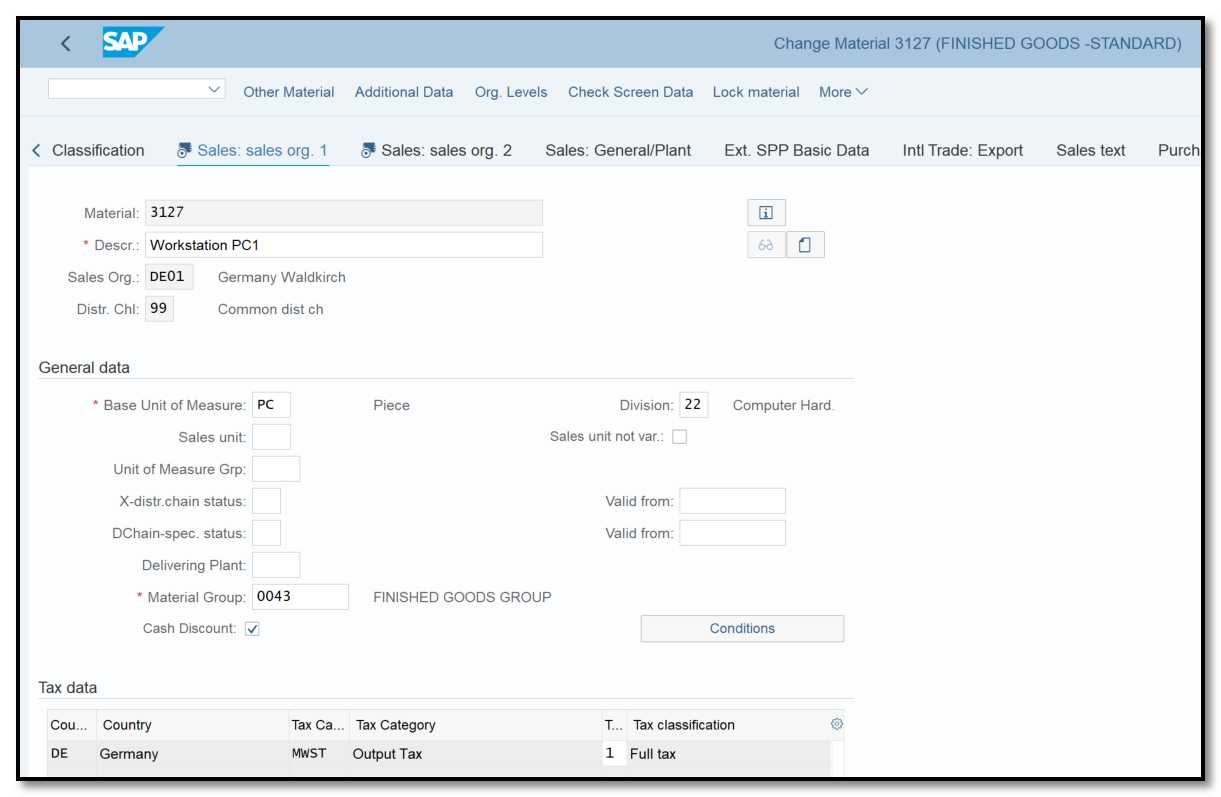
Figure 6 Maintaining the material tax classification in the material master
Step 5: Maintain Sales Tax Identification Number Determination
To find the VAT registration number in a sales order or billing document, you can specify a rule in this step. The menu path is:
IMG ➢ Sales And Distribution ➢ Basic Functions ➢ Taxes ➢ Maintain Determination of Value-Added Tax Registration Number
You are presented with a default priority rule if you leave the Tax Number field empty. Other rules, such as A (decided by the sold-to party) or B (determined from the payer), can be specified.
Step 6: Maintain Tax Codes
In the FI domain, this setting is defined. Always consult your FI team before setting up tax codes.
A tax category is represented by tax codes. For each tax code, you can provide the tax rate calculation rule using menu path:
IMG ➢ Financial Accounting ➢ Financial Accounting Global Settings ➢ Tax On Sales/Purchases ➢ Calculation ➢ Define Tax Codes For Sales And Purchases (FTXP)
You can define the tax percentage rate for each tax type for a given country and tax code combination.
Figure 7 demonstrates that we are preserving the tax rates for Germany's tax code I2. The sales tax is now fixed at 16 percent.
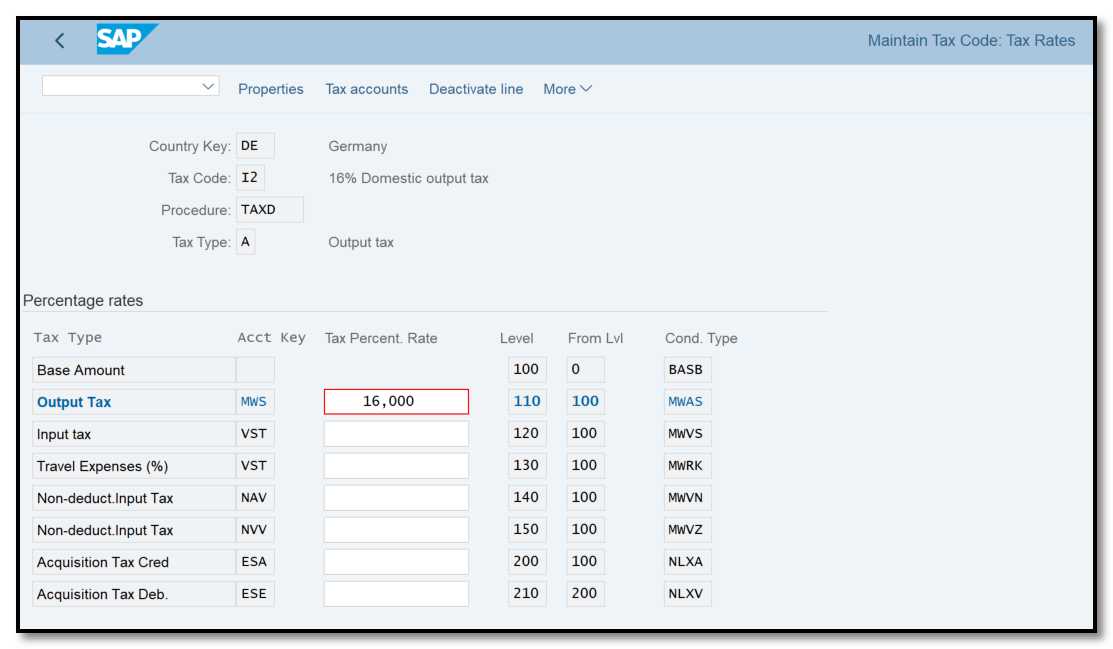
Figure 7 Maintaining tax codes
Step 7: Maintain Tax Condition Records
Like any other pricing record, you create tax records using the transaction VK11. In the condition record, you can also indicate the tax code in addition to the tax rate.
The example with the MWST condition type is shown in Figure 8. A condition record can be set up for a country, customer tax classification, and material tax classification combination. In this instance, we have kept the tax code as I2 for country DE, customer tax classification 1 (taxable client), and material tax classification 1 (taxable material). This tax code is then used by the system to calculate the precise tax rates.
Please take note that there is no tax rate preserved in the Amount field. Because of the rates established in the preceding phase, tax code I2 will be used to determine the exact tax rates (FTXP).

Figure 8 Maintaining the tax condition record
The system selects the tax rate and determines the tax amount during pricing. The tax amount is shown in Figure 9 underneath the Net value. The MWSBP field of the VBAP database also contains the value.
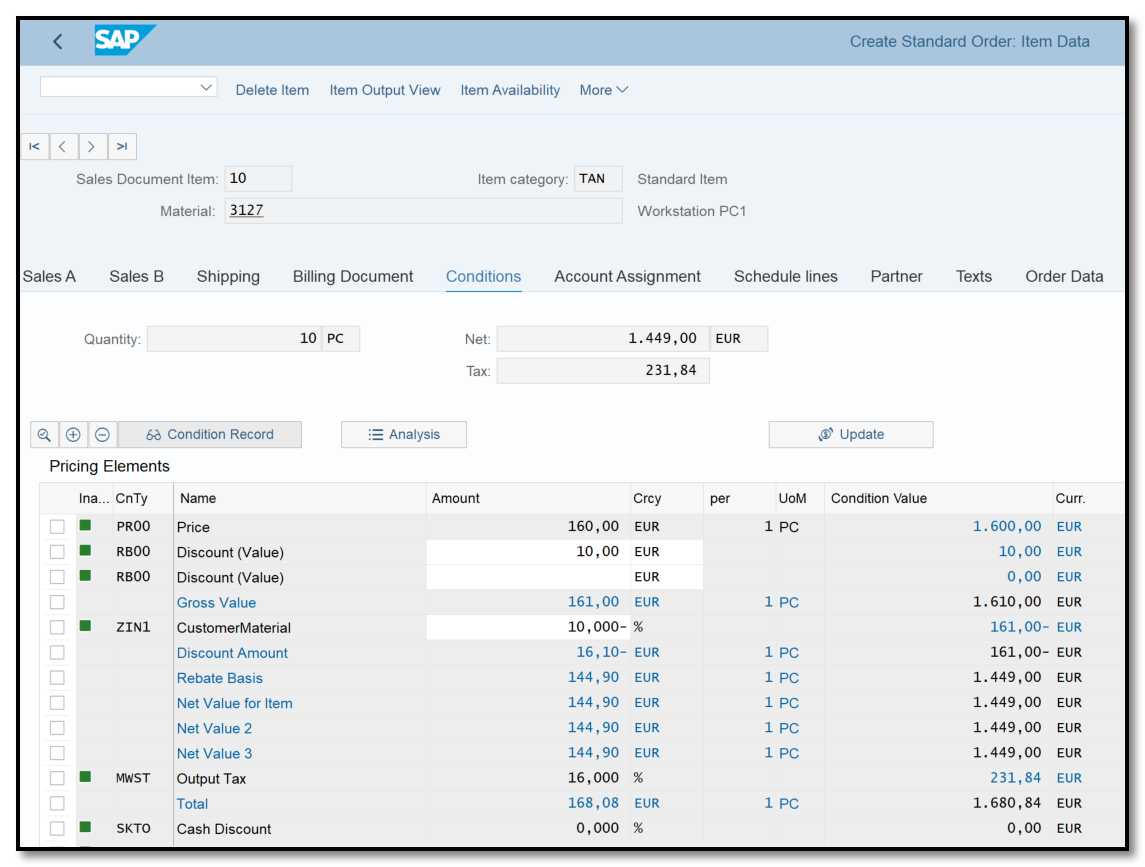
Figure 9 Tax amount on the conditions screen in the sales order
